The difference between the 14C
age of the atmospheric and marine carbon reservoirs varies spatially in
the ocean due to local and global ocean circulation. Although this is
well known, most paleoceanographic studies assume a fixed age
difference between the atmosphere and ocean even at times when ocean
circulation and ocean reservoir ages are known to have changed
dramatically. The ability to obtain well-constrained surface and deep
radiocarbon ages in the marine sediment record is compromised by
bioturbation and other stratigraphic issues. In our work we employ
distinct, identified tephra layers from volcanic eruptions in New
Zealand as instantaneous time markers. In terrestrial sediments, the
tephras' ages have been firmly established using numerous radiocarbon
ages from within-tephra and adjacent plant remains. Working in
collaboration with Tom Guilderson (Lawrence Livermore National
Laboratory), we are dating foraminifera from above and below the
tephras in marine sediments and can determine the marine reservoir age
(and the relative ventilation of deep water masses in the past) by
comparing the 14C ages of coeval marine carbonate to terrestrial organic carbon.
Our results indicate that surface and deep reservoir ages in the Southern Ocean and southwest Pacific increased by as much
as ~3500 yrs years, which is 2-5 times more than previously assumed possible with glacial to interglacial changes in ocean
circulation. This has important implications for glacial carbon cycling and far reaching consequences for determining leads
and lags between terrestrial (ice core) and ocean records of climate change. I was chief scientist on an NSF-funded coring
cruise on the R/V Roger Revelle in March 2005. On this month long cruise we obtained 37 cores which are the basis for our
present work continuing this study.
|
Map of ship's track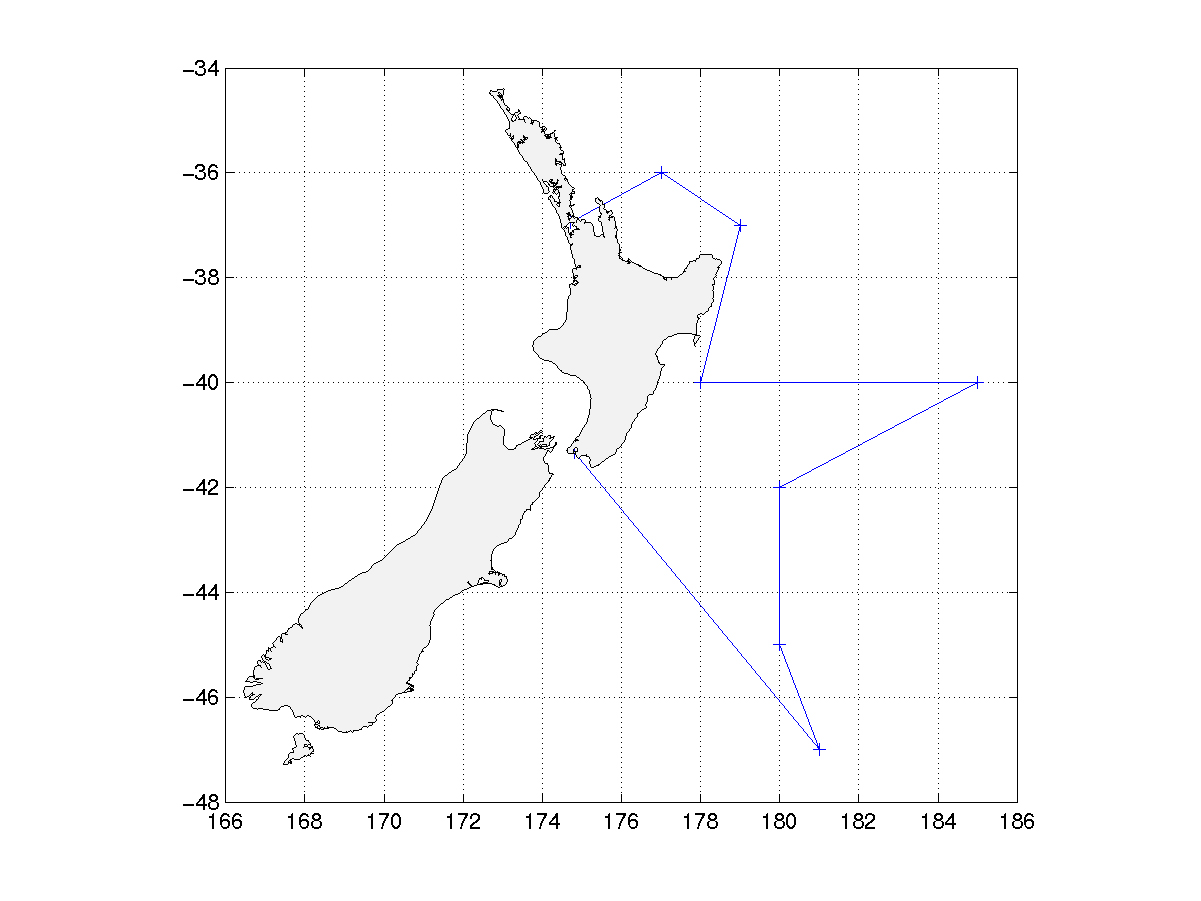 We had a cruise in March 2005 to collect cores from many different depths so that we could reconstruct the ages of deep water
around New Zealand in the past. See weblog of the cruise (link) for details of our cruise.
We had a cruise in March 2005 to collect cores from many different depths so that we could reconstruct the ages of deep water
around New Zealand in the past. See weblog of the cruise (link) for details of our cruise.
|
Ash Layers in the Core
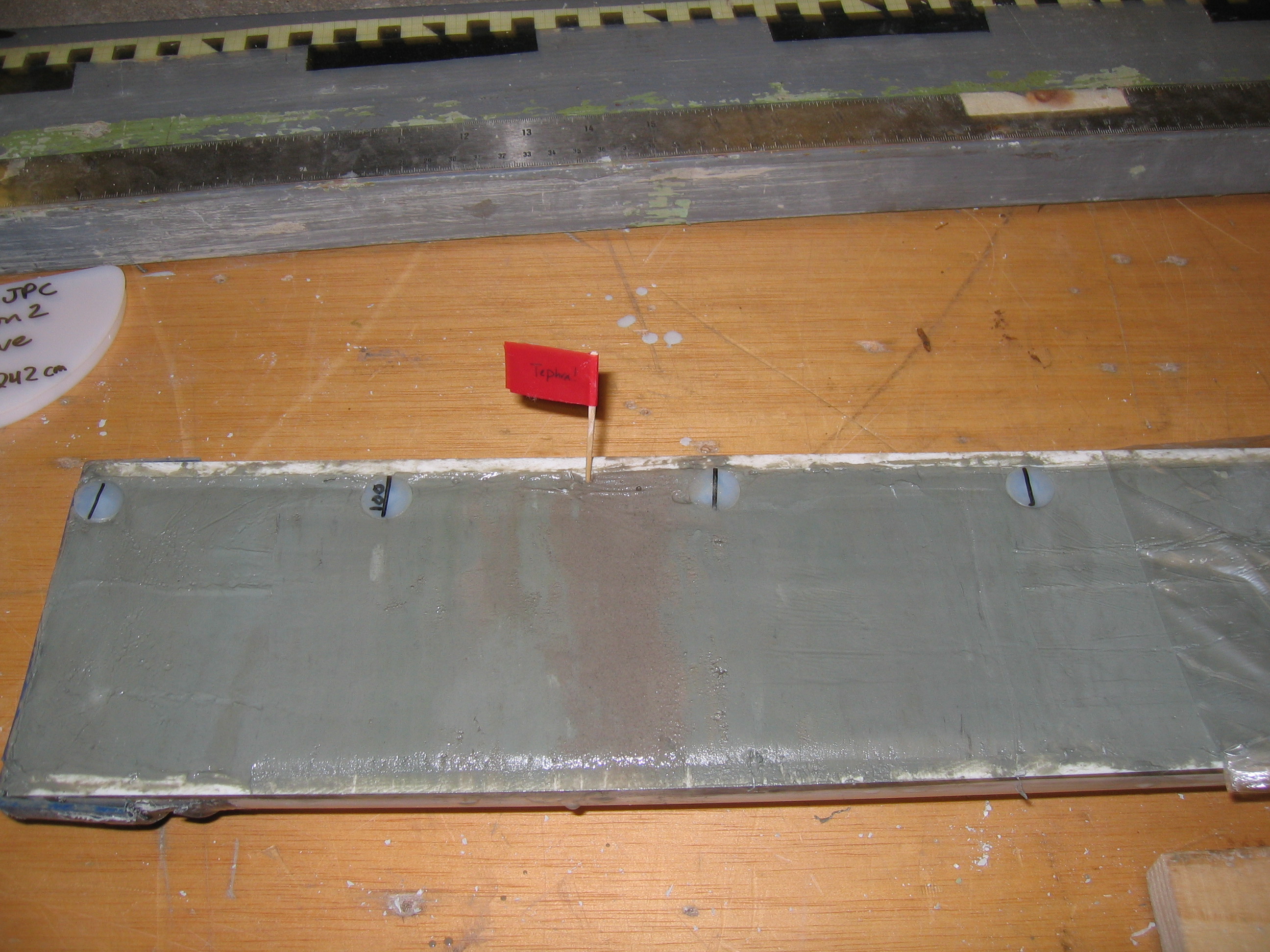
What we were looking for in our cores were ash layers from th volcanoes on New Zealand's North Island
that we could use as stratigraphic markers (like a golden spike) to correlate our many cores. |
Sampling the Core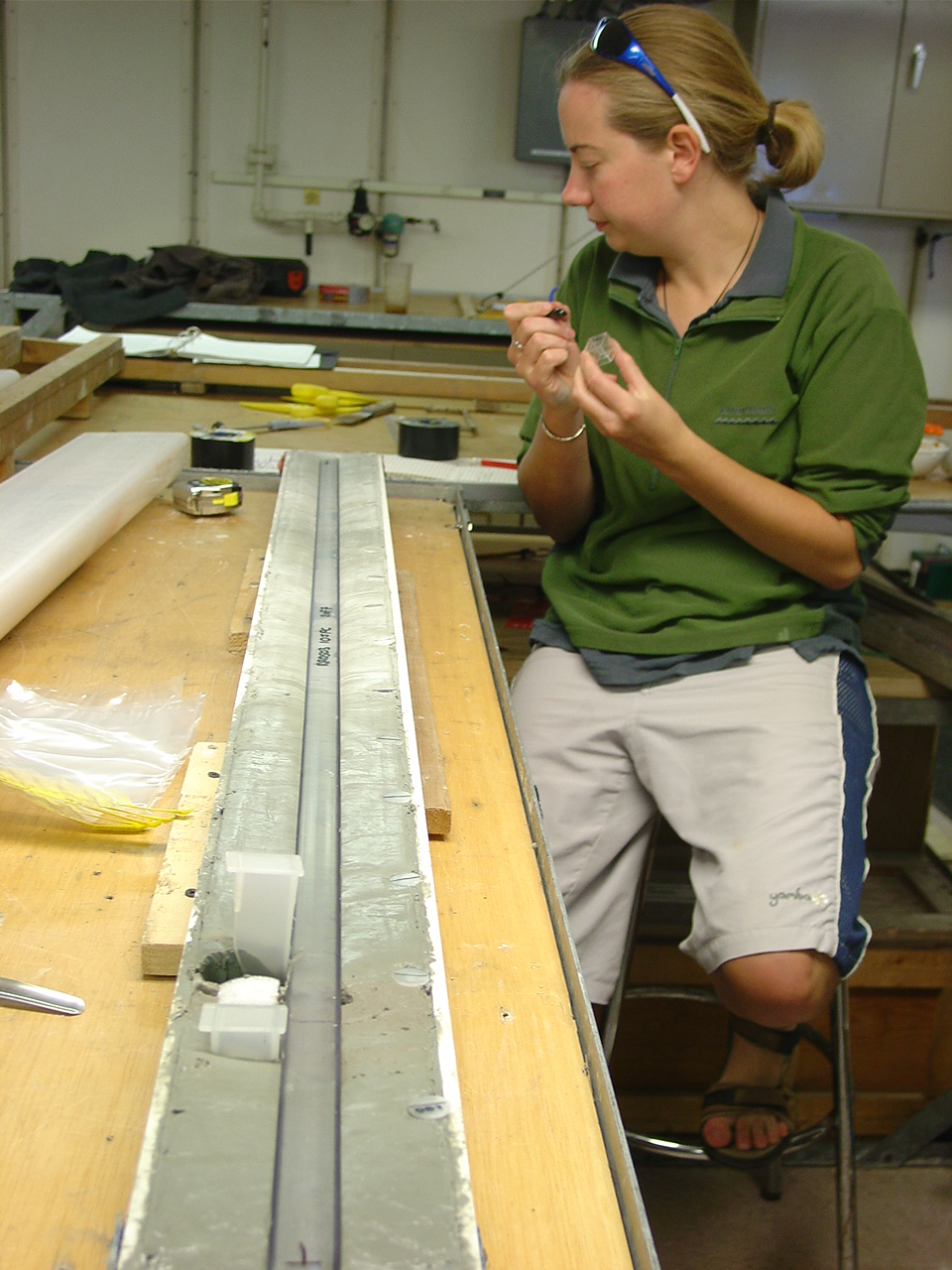 After selecting the core we would collect samples from them
After selecting the core we would collect samples from them
|
Picking Forams
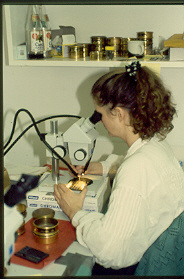 After washing away the fine mud, we select foraminfera of single species of our 14C analyses.
After washing away the fine mud, we select foraminfera of single species of our 14C analyses. |
New Zealand Forams
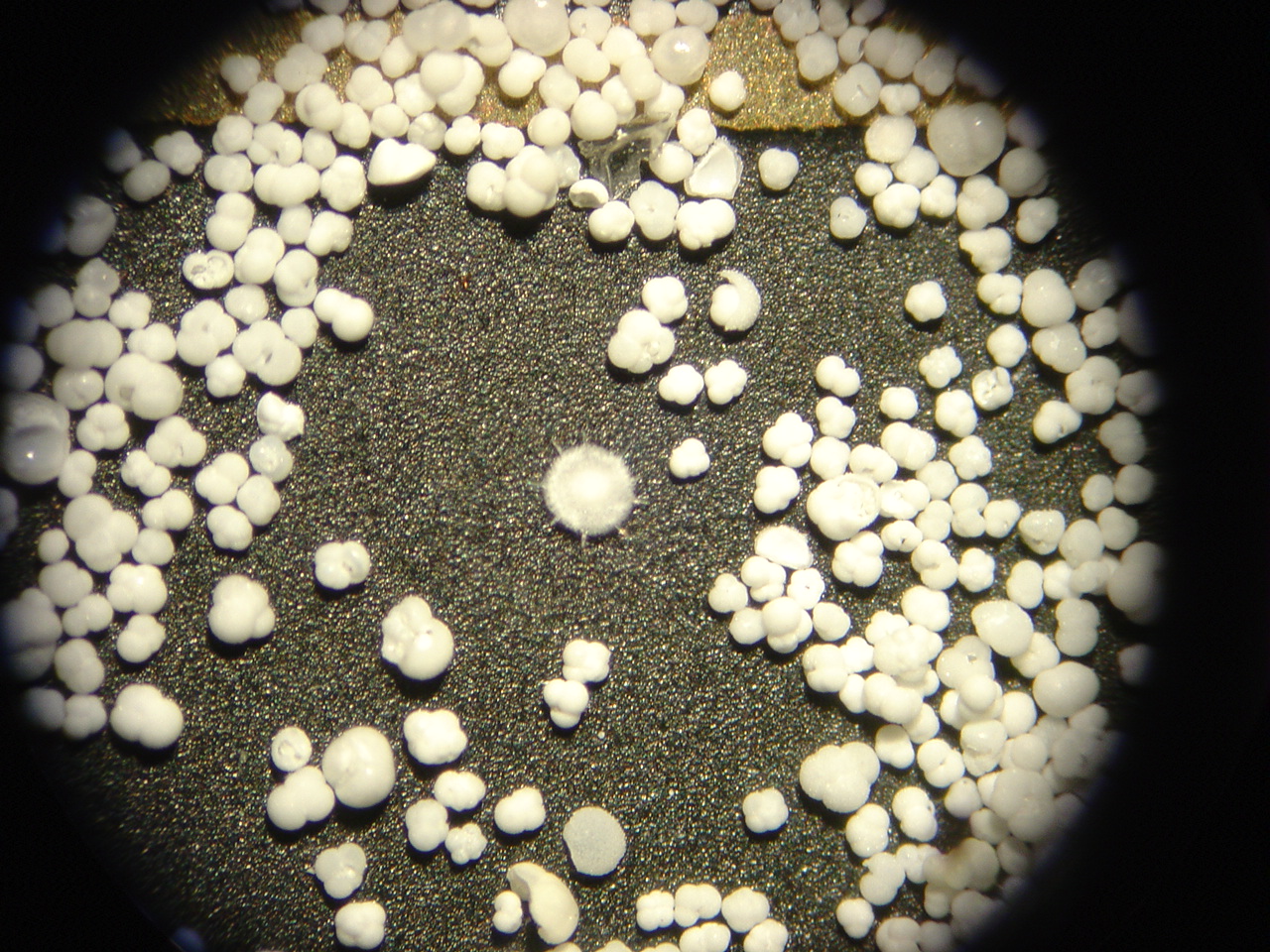 Some of the forams we find in the sediments around New Zealand.
Some of the forams we find in the sediments around New Zealand.
|
|
 We had a cruise in March 2005 to collect cores from many different depths so that we could reconstruct the ages of deep water
around New Zealand in the past. See weblog of the cruise (link) for details of our cruise.
We had a cruise in March 2005 to collect cores from many different depths so that we could reconstruct the ages of deep water
around New Zealand in the past. See weblog of the cruise (link) for details of our cruise.
 After washing away the fine mud, we select foraminfera of single species of our 14C analyses.
After washing away the fine mud, we select foraminfera of single species of our 14C analyses.